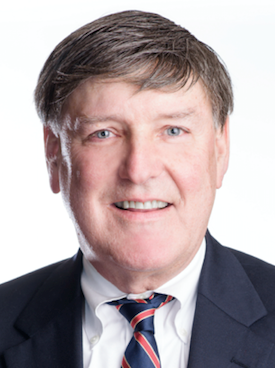Top News in Heart Rhythm: 2018
Major catheter-ablation trials, as well as the continuing development of His-bundle and leadless pacing, were tagged as big stories.
Results from two major A-fib ablation trials—CASTLE-AF and CABANA—along with advancements in pacing were among the big stories in heart rhythm management for 2018.

CASTLE-AF, which was initially presented in 2017 but was published earlier this year in the New England Journal of Medicine, randomized 363 patients with heart failure with reduced ejection and A-fib to catheter ablation or medical therapy, showing that ablation reduced the rate of all-cause death or hospitalization for worsening heart failure, as well as CV mortality.
The top-line message is that “eliminating A-fib with ablation can improve heart failure to the extent that it may improve survival, and that is very important,” said Mintu Turakhia, MD (Stanford University School of Medicine and VA Palo Alto Health Care System, CA). “That was a tough study to pull off, a tough study to execute. And even with the difficulties of ablating A-fib in heart failure, you saw a striking benefit.”
The much larger CABANA trial—presented at the Heart Rhythm Society (HRS) Scientific Sessions in May—also provided some insights into the usefulness of catheter ablation, this time in 2,204 patients with new-onset or undertreated A-fib. The trial failed to meet its primary endpoint, with no difference between catheter ablation and rate or rhythm control in terms of a composite of death, disabling stroke, serious bleeding, or cardiac arrest in the intention-to-treat analysis. Ablation fared better in per protocol
and “treatment received” analyses, but there is some controversy about how much weight should be given to those findings.
Though the primary endpoint was missed, Turakhia said, the trial showed that there was a low rate of complications with ablation. Moreover, subsequent data presented at the European Society of Cardiology (ESC) Congress in August showed that quality of life was improved in the ablation arm.
“Critics may argue that it wasn’t placebo-controlled, but some of the data that were presented at ESC indicated that the quality-of-life improvements tracked with the reduction of AF burden,” Turakhia noted, adding that he hopes to see the trial results published soon. “I’m starting to get more concerned that we’re seeing large lags between late-breaking presentations of top-line results from big trials and their papers, and I hope that this is not a trend we continue to see in 2019.”

Also identifying CABANA as one of the biggest stories of 2018, Thomas Deering, MD (Piedmont Heart Institute, Atlanta, GA), president of the Heart Rhythm Society, said: “There will be many substudies coming out of it, and it will really give us direction on where we need to go with atrial fibrillation ablation.”
Within ablation, the use of stereotactic body radiation therapy to noninvasively ablate ventricular tachycardia is promising, Deering said. Early studies suggest that it is safe and might be effective—including this one published at the end of 2017 in NEJM—although larger investigations are needed to confirm the benefits, he added.
Turakhia commented: “It’s not coming to a center near you just yet. The real question is: will it scale? But the data look very, very promising.”
Advancements in Pacing
Turakhia cited the continued development of His-bundle pacing as an important story for 2018. “There has been adoption and we’re at the point where the results in case series and anecdotes are good,” he said, acknowledging that a large, multicenter trial is still needed. “The things that have to be sorted out are case selection, knowing when to use it versus [cardiac resynchronization therapy], and some maturity in tools and in the overall procedure.”
Also in the area of pacing, Deering pointed to continued adoption of leadless pacemakers as a major story in heart rhythms this year. The first leadless pacemaker was approved by the US Food and Drug Administration in 2016, with the US Centers for Medicare & Medicaid Services announcing its decision to cover the devices in 2017.
Leadless pacemakers are currently used in patients who require single-chamber pacing, but greater use of the devices “sets the stage for the growth of multichamber devices with external energy sources that take pacemaking, which has a great benefit to patients, down to a much less invasive manner, so that we can do the same thing more safely and more consistently for longer periods of time,” Deering said.
Click here for more from TCTMD’s 2018 Year in Review.
Todd Neale is the Associate News Editor for TCTMD and a Senior Medical Journalist. He got his start in journalism at …
Read Full BioDisclosures
- Turakhia reports being a consultant to Medtronic, iRhythm, AliveCor, and Biotronik and receiving grant funding from the American Heart Association, AstraZeneca, Bristol-Myers Squibb-Pfizer, and Apple.
- Deering reports no relevant conflicts of interest.


Comments